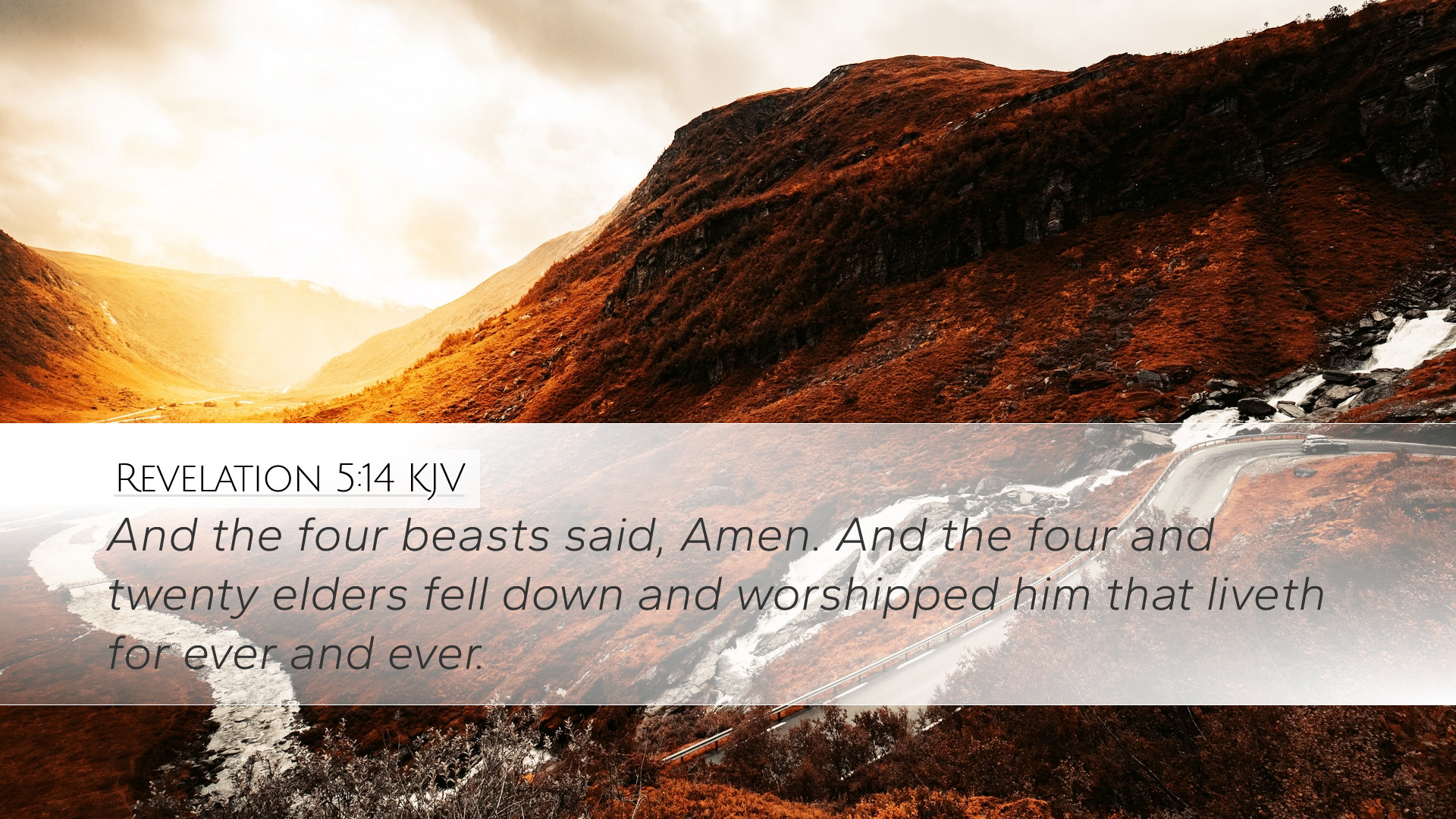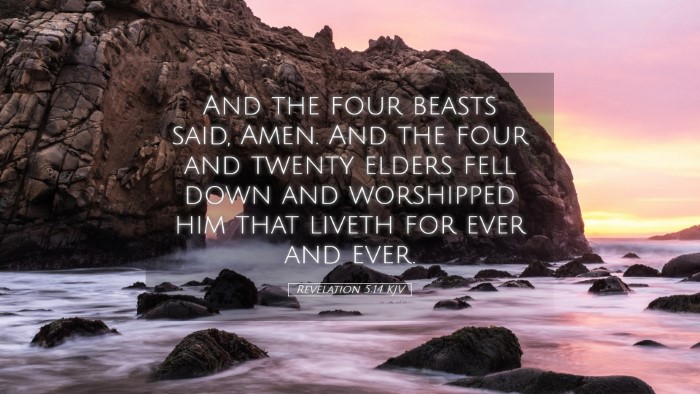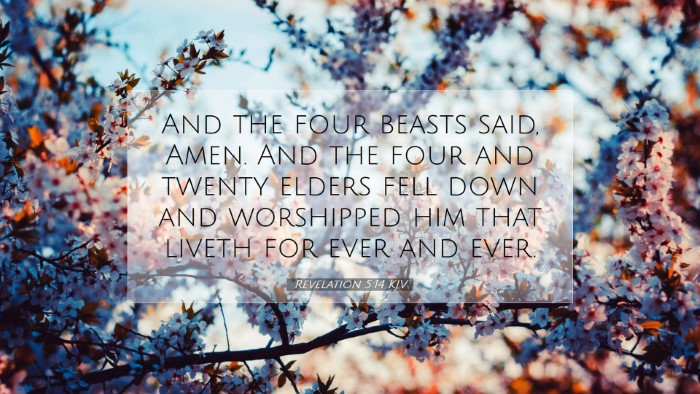Commentary on Revelation 5:14
Revelation 5:14: "And the four living creatures said, 'Amen!' and the elders fell down and worshiped."
Introduction
This verse marks a climactic point in the heavenly vision described in the Book of Revelation. It encapsulates both worship and affirmation, providing insights into the nature of divine adoration and the response of creation to God’s sovereignty.
Context of Revelation 5
The fifth chapter of Revelation reveals the scroll with seven seals, held by the One on the throne. The tension arises as no one is found worthy to open it until the Lamb appears, leading to a powerful scene of worship and praise.
Structure of Worship
The worship described in this chapter reflects a structured hierarchy, involving the four living creatures and the twenty-four elders. This serves as a reminder of the order and reverence in heavenly worship.
Insights from Commentaries
Matthew Henry's Perspective
Matthew Henry emphasizes the role of the four living creatures as representatives of all creation. He interprets their response of “Amen” as an affirmation of the worthiness of the Lamb. The creatures' declaration signifies the agreement of all creation to the glory and honor ascribed to the Redeemer:
- Worship as a Response: Henry points out that the "Amen" signifies a hearty and universal response to the praises offered, indicating the acceptance and approval of the worship that the elders present.
- Importance of Worship: He further notes the significance of worship in the heavenly realm as it reflects the unity and unbroken communion between the creatures of God and His divine presence.
Albert Barnes' Observations
Albert Barnes focuses on the act of the elders falling down in worship. He highlights the posture of worship as reflecting humility and reverence:
- Symbol of Authority: The elders represent the church, and their act of worship signifies the recognition of the supreme authority of Christ, demonstrated through His victory over sin and death.
- Collective Worship: Barnes illustrates that the collective nature of the worship (both the creatures and the elders) signifies a unity of purpose in praising God, which is essential for believers on earth to emulate.
Adam Clarke's Interpretation
Adam Clarke offers an insightful interpretation of the characters involved and their roles in the heavenly worship setting:
- Living Creatures: Clarke describes the four living creatures as symbols of the evangelistic nature of worship that encompasses all forms of creation. Their being in constant praise serves as a model for human worship.
- Significance of "Amen": The usage of "Amen" here is profound; it asserts certainty and truth in the praises rendered to the Lamb, reinforcing the theological concept that God’s declarations are faithful and true.
Theological Implications
The verse necessitates contemplation on its theological implications, particularly regarding the nature of worship within the church. It serves as a reminder of the necessity of acknowledging Christ's lordship.
The Nature of Worship
Worship is not just a human action but a cosmic response. Clarke and Henry point to the idea that worship transcends earthly boundaries, and thus, seeing celestial beings engage in worship should prompt believers to understand its significance.
Affirmation of Christ's Worthiness
The phrase “And the four living creatures said, ‘Amen!’” reveals the universal acclaim of Christ’s deity. All of creation agrees with and endorses the Lamb’s worthiness to enact the salvation story.
Practical Applications for Believers
This verse encourages practical applications for pastors, students, and theologians:
- Encouragement to Worship: Believers are urged to emulate the posture of worship exhibited by the elders—approaching God with humility and reverence.
- Community in Worship: Understanding that worship is a communal experience reinforces the church's role as a body of believers who collectively recognize and celebrate God’s grace.
- Affirmation of Faith: The use of “Amen” calls on congregants to agree and affirm God's truth in their worship, thus deepening the faith experience.
Conclusion
Revelation 5:14 brings to light the centrality of worship in both heaven and on earth. The insights from various commentaries reveal union in purpose and act as a call for believers to engage earnestly in worship, declaring the worthiness of the Lamb before the throne. Both the creatures and the elders exemplify the essence of reverence, underscoring that worship is an infinite response to God’s character and works.


